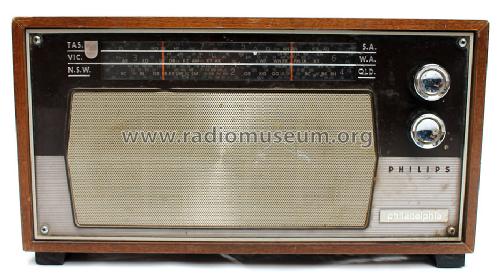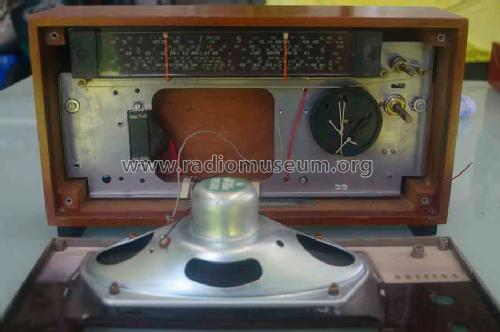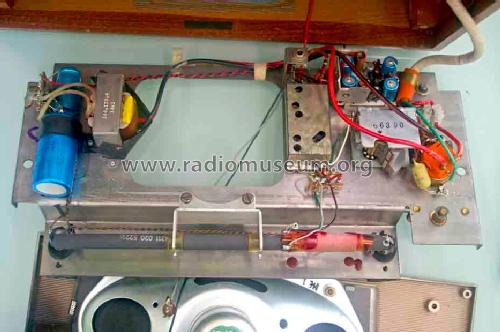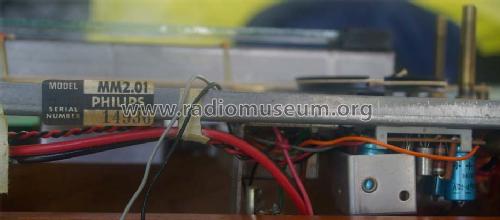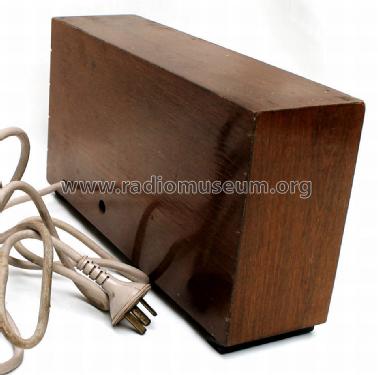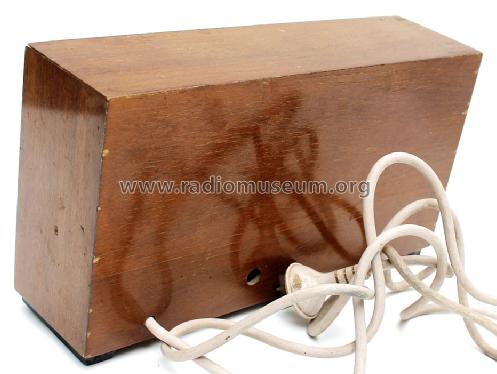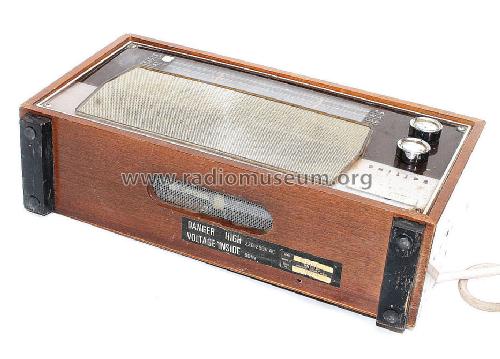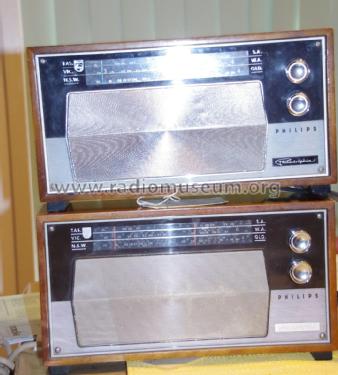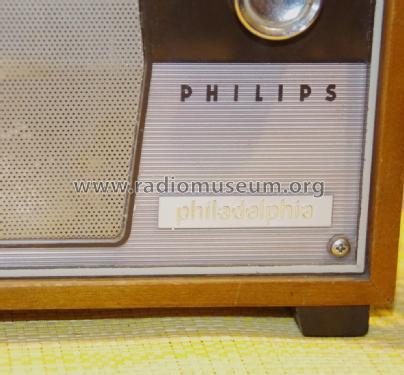Philadelphia MM2 /01
Philips Australia
- Country
- Australia
- Manufacturer / Brand
- Philips Australia
- Year
- 1968
- Category
- Broadcast Receiver - or past WW2 Tuner
- Radiomuseum.org ID
- 166803
- Number of Transistors
- 7
- Semiconductors
- BF185 or. BF195 BF185 or. BF195 BF185 or. BF194 BC108 or. BC148 AC128 AC187 AC188 unknown_diode
- Main principle
- Superheterodyne (common); ZF/IF 455 kHz; 3 AF stage(s)
- Tuned circuits
- 6 AM circuit(s)
- Wave bands
- Broadcast only (MW).
- Power type and voltage
- Alternating Current supply (AC) / 240 Volt
- Loudspeaker
- Permanent Magnet Dynamic (PDyn) Loudspeaker (moving coil) - elliptical / Ø 20 cm = 7.9 inch
- Material
- Wooden case
- from Radiomuseum.org
- Model: Philadelphia MM2 /01 - Philips Australia
- Shape
- Tablemodel without push buttons, Mantel/Midget/Compact up to 14
- Dimensions (WHD)
- 330 x 180 x 90 mm / 13 x 7.1 x 3.5 inch
- Notes
-
Updated version of model Philadelphia MM2 with audio module type UA411 & R.F./I.F. module type UF312 (silicon transistors).
Features an external earphone socket. Fairly high quality of construction. Tunes 520-1620KHz.
Cabinet finishes in Walnut, Maple & Teak.
- Net weight (2.2 lb = 1 kg)
- 2.3 kg / 5 lb 1.1 oz (5.066 lb)
- Price in first year of sale
- 69.00 AUS $
- Literature/Schematics (1)
- - - Manufacturers Literature (Philips Service Notes, UA-UF Modules, August 1968.)
- Author
- Model page created by Roger Brinkman. See "Data change" for further contributors.
- Other Models
-
Here you find 915 models, 715 with images and 425 with schematics for wireless sets etc. In French: TSF for Télégraphie sans fil.
All listed radios etc. from Philips Australia
Collections
The model Philadelphia is part of the collections of the following members.
Forum contributions about this model: Philips Australia: Philadelphia MM2 /01
Threads: 1 | Posts: 2
There is confusion between the MM2 and the MM2.01. The MM2.01 uses BF series transistors in the first (RF) module whilst the MM2 uses the earlier AF series. The schematic listed for the MM2.01 is for the earlier MM2.
The two models can be distinguished by the type face used for the word Philadelphia (white on silver for the MM2.01)
The RS300, which is the MM2.01 in a wider case with an alarm clock uses the later transistors.
Attachments
Brian Wilson, 01.Aug.16
